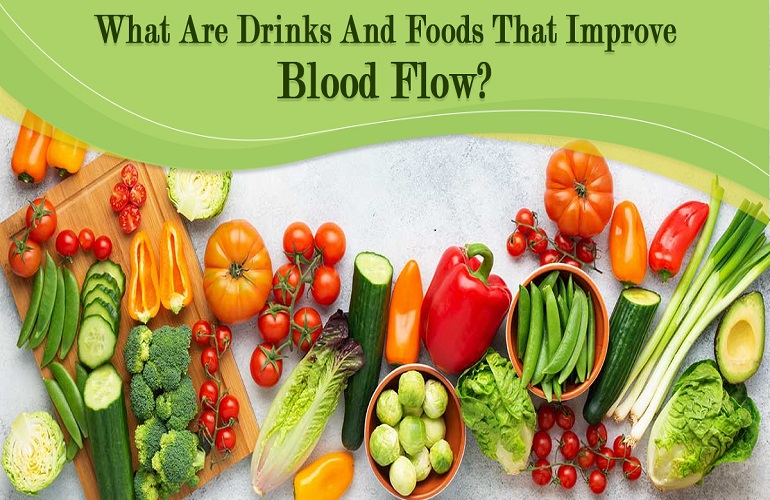The latest research shows that a healthy diet is effective in preventing and improving high blood pressure. The result was that people who ate enough vegetables and fruits were less likely to develop hypertension. Broccoli, carrots, soy foods, raisins, and apples are the right foods for lowering blood pressure.
Effective Foods in reducing the risk of developing high blood pressure
If hypertension continues, blood vessels are damaged, and arteriosclerosis progresses, making a stroke and myocardial infarction more likely to occur. People with systolic (maximum) blood pressure less than 120 mmHg and diastolic (minimum) blood pressure less than 80 mmHg have a triple risk of stroke and myocardial infarction in people with systolic (maximum) blood pressure of 140 mmHg or higher and diastolic (minimum) blood pressure of 90 mmHg or higher. There is a survey result that it rises above.
People with high blood pressure need to lower their blood pressure effectively. Therefore, it is necessary to devise a diet.
The research team analyzed data from 187,453 participants in three large-scale studies of nurses and healthcare professionals in the United States. A follow-up study of people aged 18 to 26 investigated the relationship between vegetable and fruit intake and the risk of developing hypertension.
The risk of developing hypertension was reduced by 8% in participants who consumed four or more meals a week compared to those who drank four or fewer meals a week. The risk decreases as people eat vegetables and fruits more often.
Foods that effectively reduce the risk of developing high blood pressure are broccoli, carrots, soy foods (including tofu), raisins, and apples. Daily intake of these foods is a good indicator of a healthy diet and health problems.
You must try Lion’s Mane mushroom coffee and tea if you love coffee and tea. The benefits of lion’s mane on health are uncountable and lead to a healthy life.
Easy to carry out the DASH diet Great for people suffering from high blood pressure
Researchers recommend the “DASH diet” by the American Heart Association (AHA) and others to improve high blood pressure.
People on the DASH diet are less likely to develop serious illnesses such as stroke and myocardial infarction, which are at high risk of death. The DASH diet has also been an effective diet not only for people with high blood pressure but also for people with diabetes and dyslipidemia.
How to practice the DASH diet
・ Refrain from salt
Too much salt is a significant factor in raising blood pressure, and it has been clarified that reducing salt intake can lower blood pressure. The goal is to keep daily salt intake to less than 6g.
It is helpful in “devising the seasoning” to reduce the salt content. In addition to salty taste, you can add flavor and flavor by using “sourness,” “spices,” “flavored vegetables,” and “dashi umami,” which leads to salt reduction.
Remove unsaturated fatty acids with cooking oil.
Studies have shown that adequate intake of vegetable oils containing polyunsaturated fatty acids (PUFAs) lowers blood pressure. Typical polyunsaturated fatty acids include linoleic acid in soybean oil, safflower oil, and corn oil, linolenic acid contained in sesame oil and walnuts, and DHA (docosahexaenoic acid) contained in bluefish.
In addition, olive oil and canola oil (rapeseed oil) contain much oleic acid. This monounsaturated fatty acid reduces the risk of developing stroke and myocardial infarction.
Conversely, people with high blood pressure, bad LDL cholesterol, high triglyceride levels, and increased visceral fat are advised to “avoid overdosing on saturated fats” and “prevent overeating.” Saturated fatty acids are abundant in animal fats such as lean beef and pork, chicken skin, and dairy products.
Eat more than 350g of vegetables a day.
It is also essential to “actively take dietary fiber.” Dietary fiber, which is abundant in vegetables, mushrooms, seaweed, and brown rice, suppresses cholesterol absorption in the small intestine and postprandial hyperglycemia, so it is recommended not only for people with high blood sugar but also for people with diabetes and high blood sugar levels.
Choose low-fat milk
Milk contains high-quality protein and calcium, which strengthens bones and helps regulate blood pressure. However, dairy products also contain many saturated fatty acids, so those concerned about excessive calorie intake and weight gain should be careful. If you are worried about fat content, you can choose non-fat, low-fat, skim, etc.
Eat brown rice and whole grains.
Low-refined grains, such as brown rice and whole grains, are richer in dietary fiber than ordinary bread and rice. Mixing these grains with your staple food and eating them can reasonably increase your dietary fiber intake. Since they are hungry, they also suppress appetite and prevent overeating.
Refining rice and wheat flour causes the loss of nutrients that are beneficial for diabetes. However, brown rice and whole grains can provide helpful nutrients. It would be best to incorporate them into your daily diet.
Refrain from sugar
Foods high in sugar (carbohydrates) cause a rapid increase in postprandial blood glucose levels. Even with a diet of the same amount of energy, the rise in blood sugar level can be suppressed by limiting sugar. Confectionery and sweet bread contain a lot of fat and sugar and are high in calories, so try not to eat them as much as possible. Instead, the staple food is whole-grain bread, and low-fat milk is added to supplement calcium. When eating yogurt, choose one that uses sugar-free or low-calorie sweeteners.
Continue walking for 30 minutes or more a day every day
Exercise has various effects, such as “lowering blood pressure and blood sugar level,” “preventing obesity,” “making blood vessels supple,” and “increasing good HDL cholesterol.” It is said that performing a slightly healthy aerobic exercise such as walking is suitable for bringing about the full effect of the exercise.
